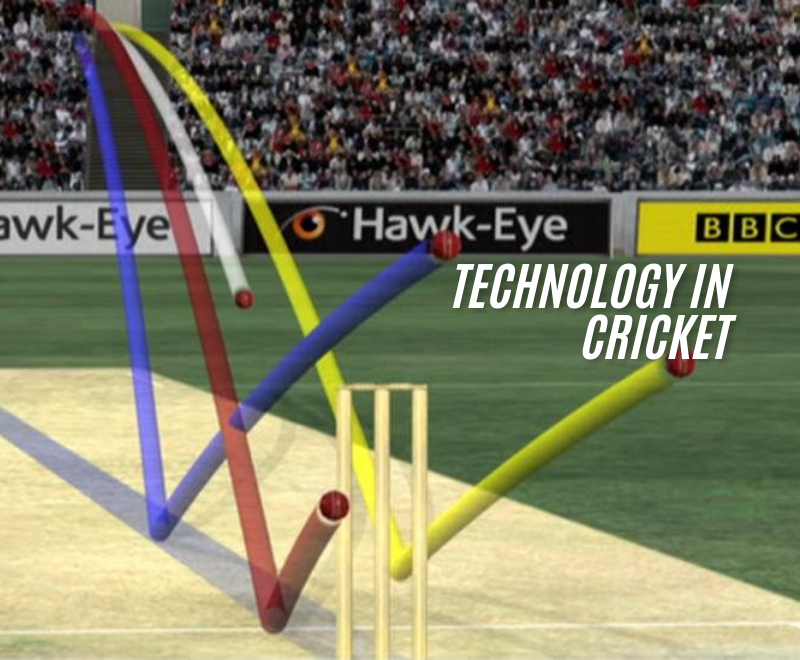Cricket has evolved significantly over the years, and technology has played a critical role in modernizing the sport. From the introduction of Decision Review Systems (DRS) to player analytics, technology has improved decision-making, enhanced fan engagement, and helped players maximize their potential.
This blog explores how technology is transforming cricket across formats, enhancing the viewing experience, and impacting players and teams.
The Role of Technology in Cricket: A Brief Overview
Technology was first introduced to cricket to reduce errors and ensure fair play. Since then, it has expanded into many aspects of the game—from tracking ball movement to analyzing player performance.
- Key Innovations:
- DRS (Decision Review System)
- Hawk-Eye Ball Tracking
- Wearables and Fitness Tracking
- Data Analytics for Performance Enhancement
Technology has not only influenced on-field decisions but also revolutionized how teams prepare for matches and how fans consume the game.
The Decision Review System (DRS)
The Decision Review System (DRS) has become an essential part of cricket, reducing umpiring errors and giving players a chance to challenge on-field decisions.
1. How DRS Works
- Ball-Tracking Technology: Predicts the path of the ball to determine whether it would have hit the stumps.
- UltraEdge (Snickometer): Detects small edges by using sound waves.
- Hotspot Technology: Identifies ball contact through infrared imaging.
DRS has made cricket more transparent and fair, though it remains controversial when used inconsistently.
Hawk-Eye and Ball Tracking
Hawk-Eye technology tracks the trajectory of the ball in real time, helping umpires make LBW (Leg Before Wicket) decisions accurately.
- Use in Umpiring: Predicts if the ball would have hit the stumps.
- Impact on Player Analysis: Teams use ball-tracking data to study bowlers’ strengths and plan batting strategies accordingly.
Hawk-Eye has become a game-changer by minimizing human error and adding precision to umpiring decisions.
Wearable Technology and Player Fitness
Wearable technology, such as GPS trackers and heart rate monitors, has become a crucial part of player management.
- Monitoring Workload: Tracks distance covered, heart rate, and fatigue levels during training and matches.
- Injury Prevention: Teams use wearable data to prevent injuries by managing players’ workloads effectively.
- Improved Fitness Levels: Modern cricketers are fitter and faster than ever, thanks to these advancements.
Fitness trackers also help coaching staff optimize player recovery during busy tournament schedules.
Data Analytics: Enhancing Performance and Strategy
Teams are increasingly using data analytics to gain a competitive edge. From analyzing opponents’ patterns to measuring player form, data plays a significant role in modern cricket.
1. Pre-Match Preparation
- Studying Opponents: Teams analyze bowling and batting patterns to strategize effectively.
- Pitch Analysis: Data on pitch conditions helps teams decide on team composition and bowling strategies.
2. Real-Time Analytics During Matches
- Fielding Positioning: Teams use heat maps and data points to position fielders optimally.
- Batting Performance Metrics: Batsmen receive feedback on strike rates, shot selection, and timing during innings.
Fan Engagement Through Technology
Technology has revolutionized how fans engage with cricket, making the sport more interactive and accessible.
1. Live Streaming and Virtual Reality (VR)
- Live Streaming Platforms: Fans can watch matches in real-time from anywhere in the world.
- VR Experiences: Some broadcasters offer virtual reality experiences, allowing fans to experience matches as if they were in the stadium.
2. Social Media Interaction
- Platforms like Twitter and Instagram allow fans to engage with players, teams, and commentators during matches.
- Polls and Predictions: Fans participate in live polls and predict match outcomes, adding to the excitement.
Broadcast Innovations: Enhancing the Viewing Experience
Broadcast technology has significantly improved, providing fans with in-depth analysis and real-time statistics.
- Slow-Motion Replays: Offer detailed analysis of key moments, such as catches and run-outs.
- Stump Cameras and Microphones: Capture every moment, adding excitement to match broadcasts.
- Spidercam: Provides aerial views of the field, offering a unique perspective on the game.
Technology in Cricket Coaching
Coaching has become more scientific with the help of technology. Coaches now rely on video analysis and performance software to develop strategies.
- Video Analysis: Players can review their techniques and identify areas for improvement.
- Simulated Practice Sessions: Teams use simulators to practice under specific conditions, such as chasing in night matches.
Challenges of Using Technology in Cricket
While technology has improved many aspects of the game, it also brings challenges.
- Controversial Decisions: DRS has faced criticism for inconsistent outcomes.
- High Costs: Advanced technologies like Hawk-Eye are expensive to implement, limiting their use in smaller leagues.
- Over-Reliance on Data: Some critics argue that cricket is becoming too data-driven, reducing the instinctive element of the game.
Despite these challenges, the benefits outweigh the drawbacks, and technology will continue to shape the sport.
The Future of Technology in Cricket
The future of technology in cricket looks promising, with new innovations on the horizon.
1. AI and Machine Learning in Cricket
- AI-powered analysis tools could provide real-time insights during matches.
- Machine learning models will predict player form and injuries, helping teams make better decisions.
2. Enhanced Fan Engagement with Augmented Reality (AR)
- AR filters will allow fans to participate virtually in stadium experiences.
- Interactive AR scoreboards could provide in-depth stats during matches.
3. Blockchain for Ticketing and Merchandise
Blockchain technology could revolutionize ticketing systems, making them more secure and reducing scalping.
Technology’s Lasting Impact on Cricket
Technology has undoubtedly transformed cricket, making it more competitive, engaging, and precise. From DRS and Hawk-Eye to wearables and real-time analytics, every aspect of the game has benefited from technological advancements.
As technology continues to evolve, cricket will become even more dynamic and fan-friendly. While challenges remain, the sport’s ability to adapt and embrace innovation ensures it will stay relevant for generations to come.
Whether you’re a player or a fan, technology offers new ways to experience cricket, making it a thrilling journey for everyone involved.

